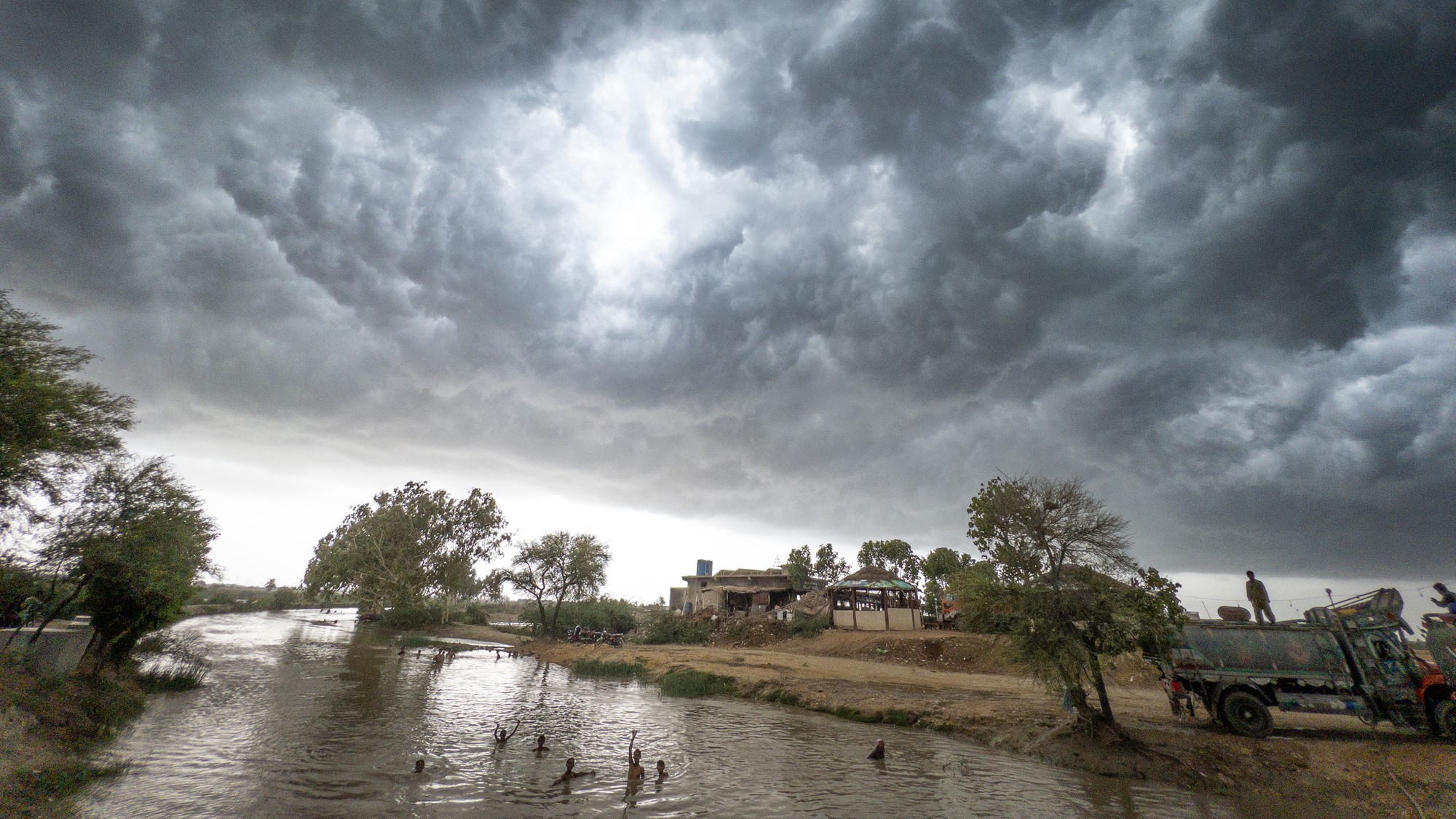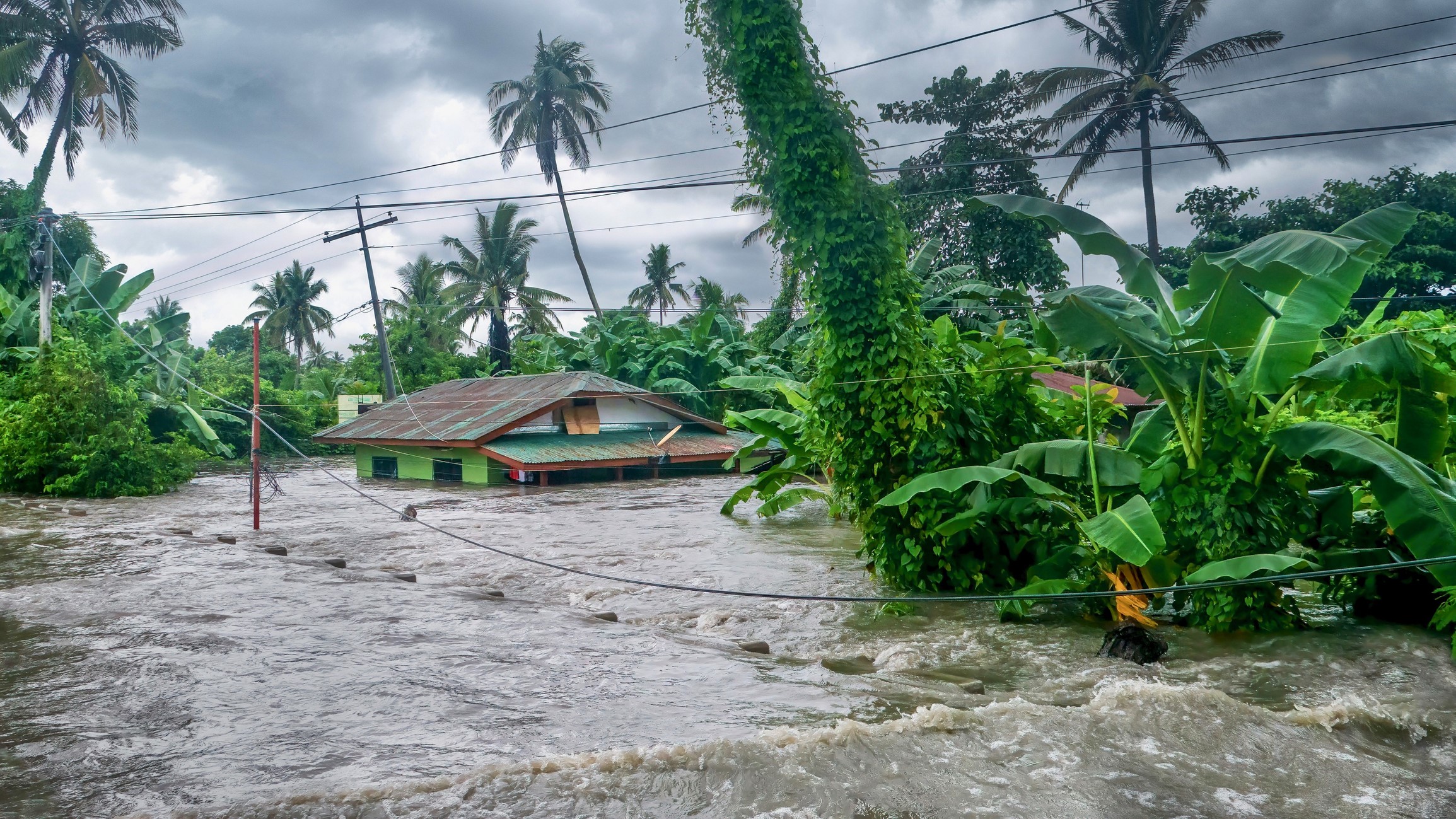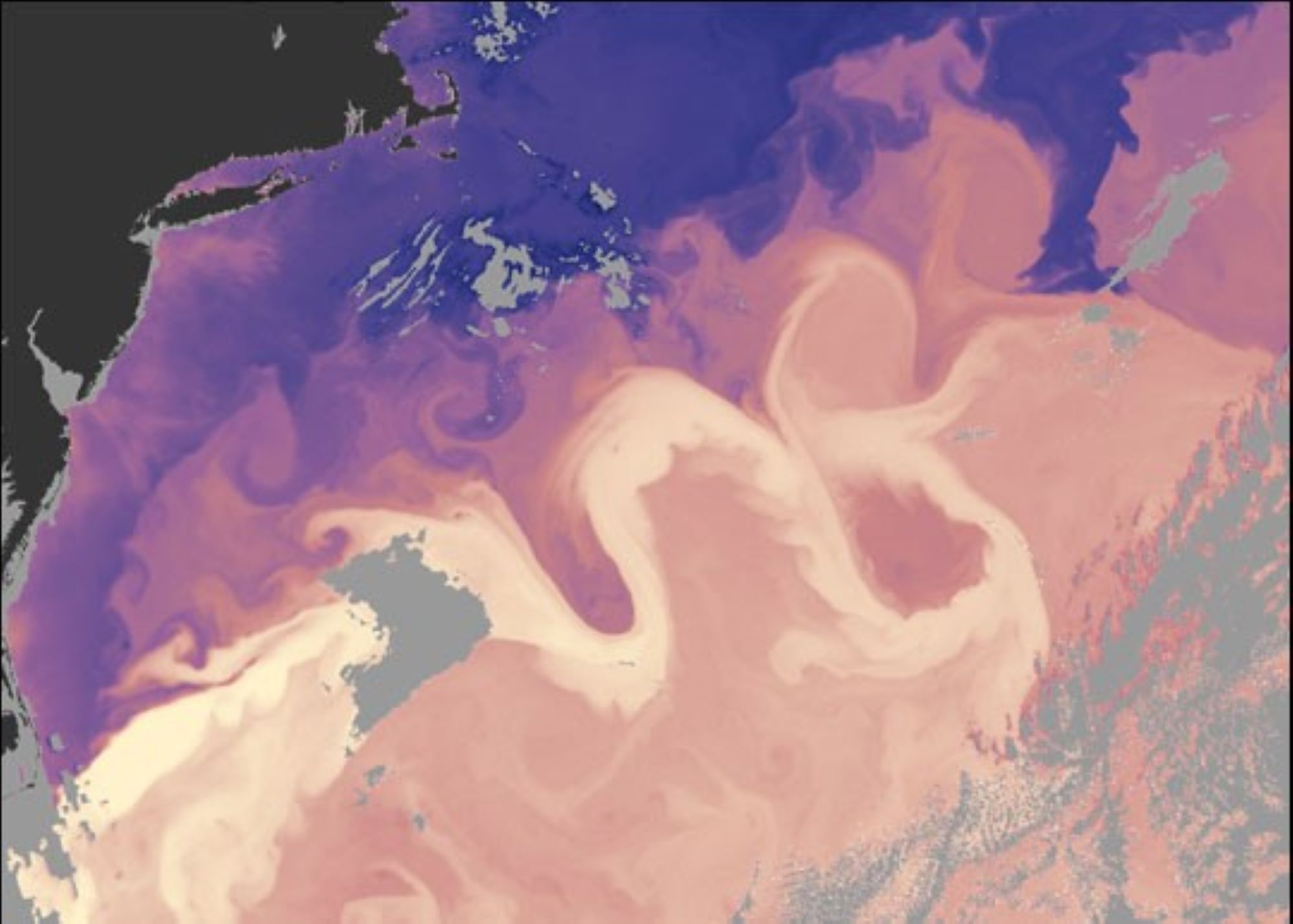
Atlantic Ocean currents that carry heat to the Northern Hemisphere could be grinding to a halt due to climate change. And if the vital currents do slump, tropical monsoon systems would be thrown into chaos for at least a century, a new study suggests.
The Atlantic Meridional Overturning Circulation (AMOC) is a huge conveyor belt of ocean currents, including the Gulf Stream, that pumps heat and salt from the South Atlantic to the North Atlantic. "I like to think of it as a sort of ventilator," study lead author Maya Ben-Yami, a climate researcher specializing in climatic tipping points at the Technical University of Munich in Germany, told Live Science. "Part of the reason that we're worried about the collapse of the AMOC is because it has such a huge impact on the sort of heat transport within the Earth system."
Global warming threatens the AMOC because it is melting glaciers and ice sheets, which then ooze fresh water into the North Atlantic. This dilutes the salinity of the top layers of water and prevents them from sinking to the bottom of the ocean, where they would normally drive the circulation back south.
"The AMOC basically depends on saltier, denser water sinking down in the North," Ben-Yami said. "By freshening that water, you're basically stopping the circulation."
An AMOC collapse is likely to trigger climatic changes around the globe, but the Northern Hemisphere and tropical monsoon regions are on the frontline, Ben-Yami said. Researchers have long suspected that a weakening of the AMOC would disrupt tropical monsoon systems, but the new study gives a far more detailed picture of what's likely to come, she said.
Tropical monsoons occur in a narrow band of low-pressure atmospheric conditions that wraps around Earth near the equator. Trade winds from the Northern and Southern hemispheres flow into this band, which is known as the Inter-Tropical Convergence Zone (ITCZ), leading to heavy rainfall and thunderstorms during several months of the year.
The ITCZ is interlinked with ocean temperatures, and therefore with the AMOC, Ben-Yami said. The ITCZ is born out of warm air rising from the sea, so it forms above the hottest places on Earth, bobbing up and down along the equator with the seasons.

"Because the Earth has a tilt, the warmest location on the Earth moves up and down," Ben-Yami said. "So you have this little band of really very high rainfall around the planet that also moves up and down."
If the AMOC slows down or comes to a standstill, it won't supply the same heat to the Northern Hemisphere, meaning sea temperatures there will get colder. And if the Northern Hemisphere gets colder, Earth's hottest places will move farther south. The ITCZ will follow, still bobbing up and down but closer to the South Pole, taking vital rainfall with it. "Right now, we have these regions that are used to getting this very intense rainfall in their wet seasons," but that may not last when the whole system shifts southward, Ben-Yami said.
To simulate the effects of an AMOC collapse on tropical monsoons, Ben-Yami and her colleagues used eight state-of-the-art climate models to perform so-called "hosing" experiments. Hosing is the equivalent of pouring fresh water into the North Atlantic to model the impacts of melting ice, she said, and the researchers did this for a simulated period of 50 years until the AMOC slumped. The team published its findings Sept. 3 in the journal Earth's Future.

The models indicated that an AMOC collapse would disrupt tropical monsoon systems across the planet. In West Africa, India and East Asia, the rainy season became shorter and less intense as the ITCZ shifted southward. These results aligned with previous predictions, Ben-Yami said, but the climate shifts in South America took the researchers by surprise.
"The more interesting results are for the Amazon," Ben-Yami said. There, the model predicted a significant delay in the yearly monsoon as well as a reduction in rainfall. While the impacts on the rainforest and farmlands remain unknown, "the rainy season coming three months later could be very bad for the ecosystem," she said.
Once the AMOC collapsed in the models, the researchers switched off the hosing simulation and observed the system for another 100 years. Despite the lack of freshwater input, tropical monsoons did not return to their original state, suggesting the effects of an AMOC collapse are irreversible for at least a century.
"The impacts that we have in this paper are not reversible in 100 years," Ben-Yami said, adding that "on a human timescale 100 years is a long time."







